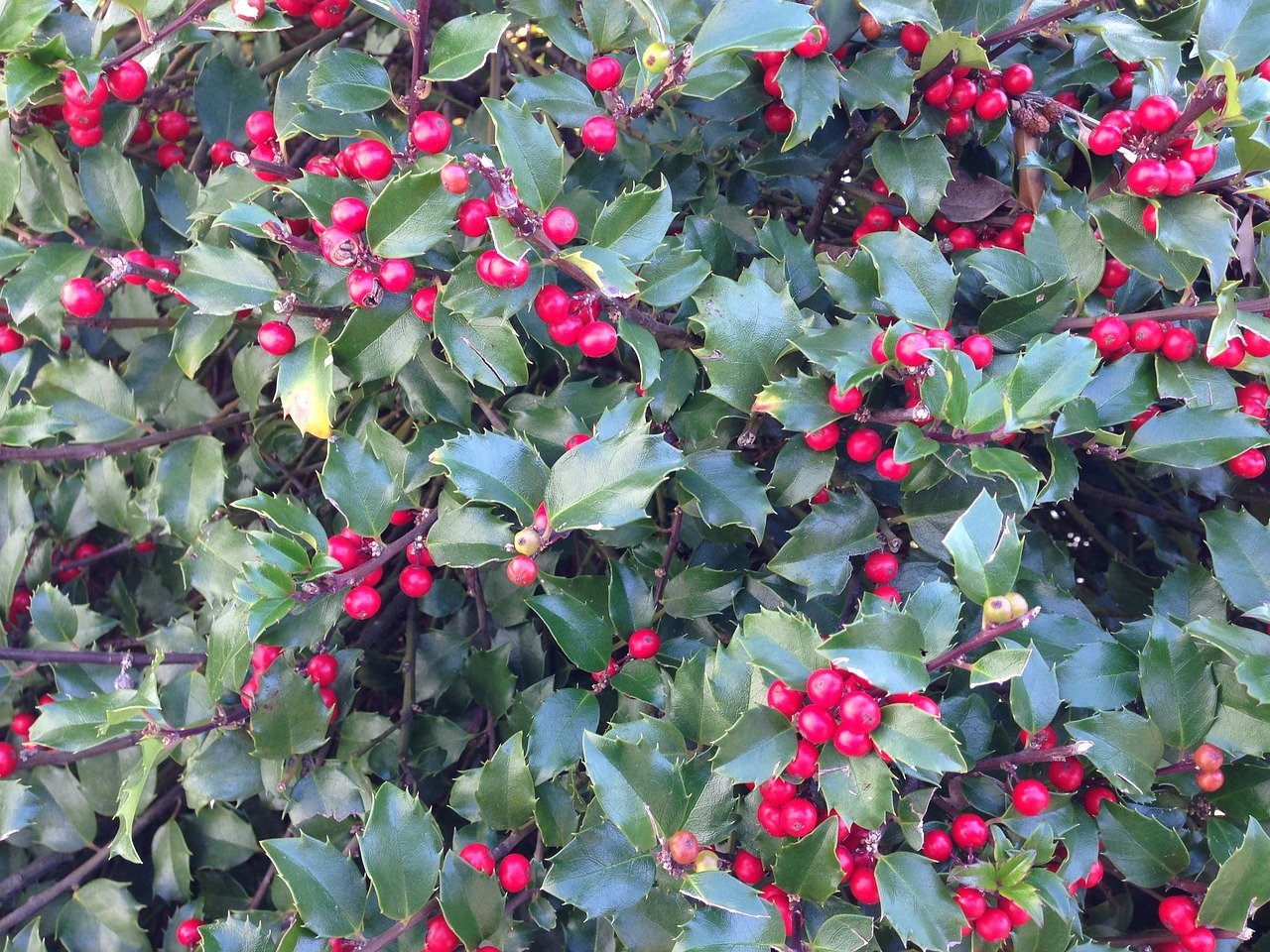I hate it when I answer a gardening inquiry and then later learn that my answer was only partially correct. Yet, that is what happened this week when a friend asked why her holly (Ilex genus) that normally has plenty of berries is berry-free this year. I will spare you the repetition of my half-wrong answer and offer up correct information. (I noticed today that one of my hollies that usually drips with berries is completely bare. Another, a few feet away, is heavy with fruit.)
Hollies are mostly dioecious, meaning that some plants are male and others are female. The females produce fruit only if there is a male in the vicinity so that cross-pollination can take place. There are a few that are self-fruitful, meaning they produce berries without a pollinating partner. Ilex x ‘Nellie Stevens’ and Ilex cornuta ‘Burfordii’ are two self-fruitful varieties with plenty of berries. Even with a opposite-sex partner, hollies sometimes produce little or no fruit in a given year. This can be attributed to several possible reasons: (1) A juvenile plant. Seed-grown plants may need five years or more before they start fruiting. Plants grown from cuttings usually fruit within two years. (2) A late frost which damaged the blooms. (3) Poor pollination, even on a self-fruitful plant. Bad weather during flowering season can reduce bee activity. (4) Too much nitrogen in the soil, usually as a byproduct of applying heavy fertilizer to a lawn. (5) Missed connections. If males and females bloom at separate times, pollination may be reduced. I see this most often in winterberry holly (Ilex verticillata). Winterberry’s bright red fruits look stunning against their leafless branches in winter. Not all males bloom at the same time as the females. Check labels for a recommended pairing. It does no good to pair an early-flowering male with a late-flowering female, even within the same species. Heavy rainfall during the pollination window can have the same effect.
There are multiple species within the Ilex (pronounced EYE-leks) genus. American holly, Ilex opaca, is the one we think of as the traditional Christmas holly. It has sharp spines on the leaves and bright red berries. Don’t make the mistake of planting one where it will outgrow the available space. American holly can get up to fifty feet tall. Chinese holly or horned holly, Ilex cornuta, also has spiny leaves and red berries. Chinese holly cultivar ‘Burfordii” is popular because it does not need a pollinator to produce plentiful berries. While it is not as large as the American holly, it is still up to twenty-five feet tall at maturity. Don’t be misled by the description of “dwarf Burfordii.” A dwarf giant is still a large plant – up to ten feet.
Japanese holly, Ilex crenata, has small leaves with smooth edges and is often used in hedges as an alternative to boxwood (Buxus). They have black fruit. Inkberry holly, Ilex glabra, has longer leaves than I. crenata, with smooth leaf edges and black fruit. It is also used as a boxwood substitute.
My two favorite hollies are ‘Nellie R. Stevens’ and ‘Liberty.’ ‘Nellie R. Stevens’ is a heat tolerant hybrid that will produce berries without a partner, although fruiting will be heavier with a pollinator nearby. It can grow to thirty feet tall and less than half that wide, a slender garden feature. Most leaves have three points per side, like the holly leaf we learned to draw as children. It prefers a little more shade than other hollies. ‘Liberty’ holly is a hybrid that is pyramid-shaped, like the Liberty Bell. The dark green leaves have up to twenty pairs of small points. Given full sun, it will be dense and produce plentiful berries. In more shade, the plant becomes looser and has fewer berries. It can grow up to fifteen feet tall. The lower limbs can be removed to make it more tree-like and less shrub-like.
Cultural needs vary between the species, but almost all like well-drained, moist, slightly acidic soil in full sun to mostly sun. Winterberry holly is the exception to the well-drained soil requirement. It prefers wet soils, but will survive in dryer ground.
Fall planting is preferred for all species. Bees love tiny holly flowers, so shrubs are best planted away from walkways so they will not be brushed by visitors. Where space allows, the taller types make a fantastic evergreen privacy hedge and windbreak. Hollies are cold hardy in zones 7-9, at minimum.
The leathery leaves of this holly contrast with bright red berries.
‘Liberty’ holly leaves have many small points on each leaf edge.


